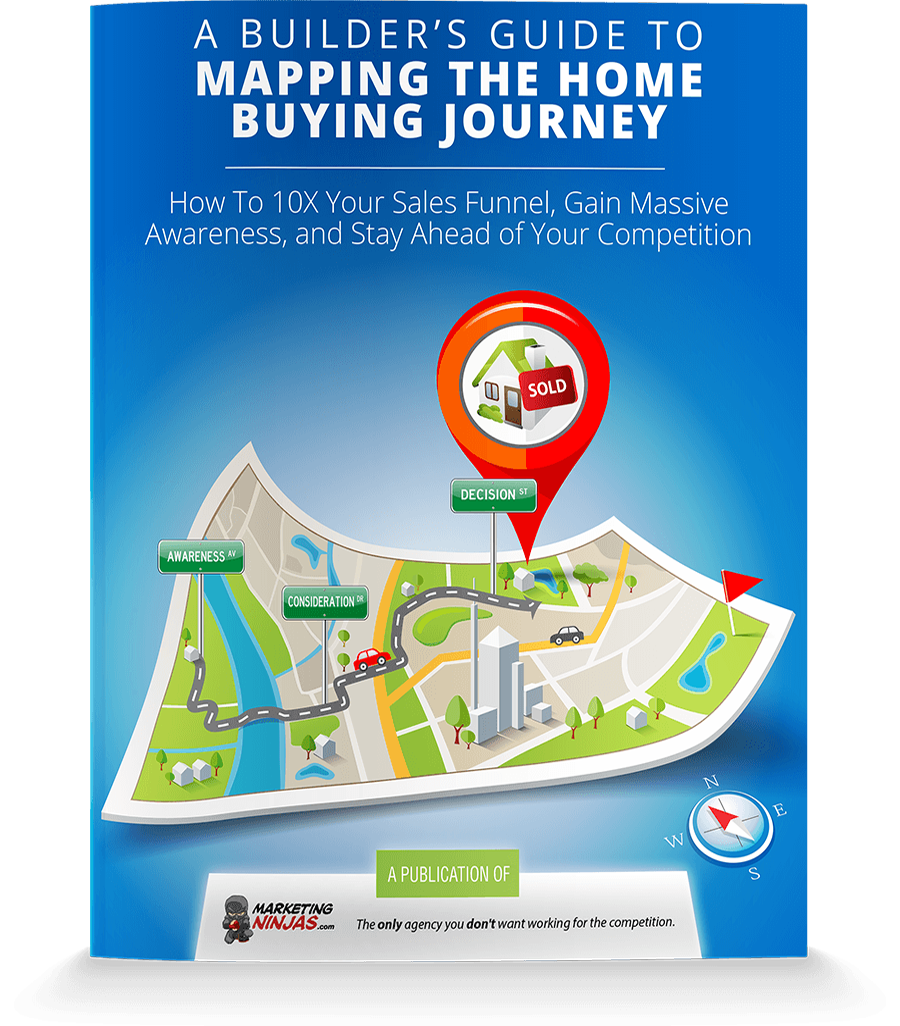Wouldn’t it be great if you could sell your homes to people with little to no effort? This may sound like an almost impossible feat, but consider this scenario:
Reading time: 12 minutes
Level: Novice
Skip to the section you're most interested in:
- What is a Buyer Persona?
- Why do You Need One?
- Buyer Persona Development
- Where to Find Information?
- Creating a Profile (see full examples here!)
- Applying Buyer Personas to the Content Process
We also have a handy infographic you can take a look at here.
As a young child in school, you likely participated in some form of sales. Maybe it was selling cookies to raise money for a charitable organization, or magazine subscriptions in order to save up for a sports trip. In your efforts, you probably went door-to-door with your product in hand and sales pitch in mind.
But what you might remember is your attempt to sell to the grumpy old man five houses down ended with a “not interested” and a door quickly shut in your face, while selling to your grandmother was as easy as selling one (or twelve) pies!
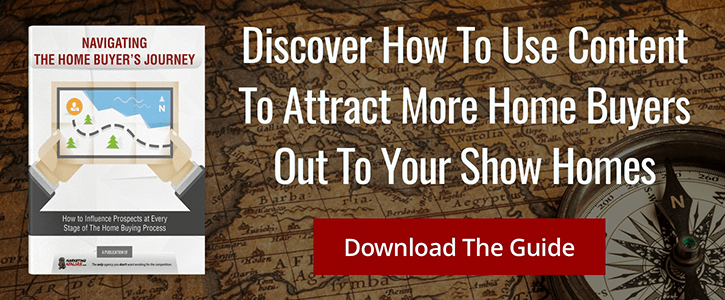 Sure, you could argue that it's Grandma’s heart of gold that allowed you to easily secure a sale from her. But there’s another difference.
Sure, you could argue that it's Grandma’s heart of gold that allowed you to easily secure a sale from her. But there’s another difference.
Rapport.
You and your grandmother have a foundational relationship, which means you knew exactly what to say and how to say it: “you have to buy the sugar cookies, Grandma, they’ll go great with the tea you serve at brunch on Sundays!”
Now, imagine you could have this sort of relational advantage with each and every one of your customers by knowing who they are.
You can.
Introducing the highly important Buyer Persona…
What is A Buyer Persona?
You can think of a buyer persona as a sort of “fictional character.” However, it also needs to be realistic. It's a representation of your “ideal prospect," an outline of the type of person you want to sell your home to.
To further put this into perspective, think about how people present themselves on Facebook. Each person has an individual profile that gives onlookers a general overview of who they are. This might include information on things such as their background, demographics, career industry, and more.
Without the person offering this personal information, there are missing pieces. And our assumptions about people are often inaccurate. This is why buyer personas are not something you come up with on your own – as mentioned, they must be realistic.
Buyer personas are based on real data – a collection of offered information and tracked behavioural trends – gained through interactions with customers and web analytics. We’ll discuss exactly how to develop buyer personas in this article.
Why Do You Need One?
Before we delve into the development of buyer personas, you may be wondering why they're such an important part of your marketing strategy.
First and foremost, successful marketing requires a deep understanding of your audience. But how much we need to know is continuously increasing in the new, digital world.
People will be most receptive to a product that comes as a direct solution to a problem or opportunity they are personally facing. But even if you have the solution, you have to know the best way to present this to your audience. In the "information overload" era we find ourselves in, a crystal clear understanding of who your audience is, what they need, and why they need it is a prerequisite to creating content that's actually noticed online.
Understanding your buyer personas means learning not only what your prospects buy but how they make their purchases – where they seek information, where they spend time online, and what they’re drawn to (AKA what will make them click). Staying informed about where your audience hangs out online is hugely important because, well, then you can be there, too!
For example, there’s no use creating a long-winded eBook to post on LinkedIn if your target audience is first-time buyers. In developing a buyer persona, you may realize First-Time Fiona is much more likely to respond to a short, attention-grabbing tweet.
Point is: taking the time to create buyer personas will save you a lot of time and energy going forward.
Point is: taking the time to create buyer personas will save you a lot of time AND energy going forward https://t.co/q6IVS1CLjR
— Marketing Ninjas (@MarketingNinjas) April 9, 2018
See? We didn’t even need 280 characters to get this message across!
But… since you, our buyer persona (*wink*), are very interested to learn more about how you can use buyer personas to improve your home builder marketing strategies, we'll keep the character count climbing. Let’s dive into how to create your buyer personas, and put them into practice.
Buyer Persona Development
We’ve recognized that buyer personas are central to content marketing in that they allow you to refine your content for a specific audience and platform. Even more, you can write your content to a specific person, making the entire experience for readers much more personalized.
So how do you write to someone personally – as if you know them – when, in fact, you don’t personally know them at all?
 The answer is research!
The answer is research!
As previously mentioned, buyer personas are not based on assumptions. However, you can start with an outline of your ideal prospect (again, people you want to sell to.) Looking at your existing customers can be extremely helpful here. Jot down some common attributes you’ve noticed in previous buyers. But this won’t be enough; you have to find out if there are actual people that fit the description of the “ideal prospect” you’re after. Then, dig deeper!
You want to find out what these people are dealing with, what keeps them up at night, and what they’re working towards; you want to know their goals and motivations and what turns them off completely. To create great content, you need to understand context to know what your prospects want to see.
Your next step, then, is to identify questions you can ask current customers and prospective buyers that will help you build a buyer persona profile. You can do this in the form of interviews and surveys, or forms on your site (that must be filled out to receive a free piece of premium content, for example.) You can have the salespeople in your show homes ask discovery questions when they're engaging with potential buyers. Ask current customers, former customers, and prospects. You can even ask coworkers about the common types of prospects and customers they’ve interacted with.
Some potential questions to ask:
- Age (range)
- Do you have children/how many?
- What company/organization/industry are you a part of?
- Why are you looking for a new home?
- How do you learn about new information?
- How do you research companies/products?
Note: These questions should be directly tailored to your product. As a home builder, each of these questions directly ties into what type of home they would be looking for.
Once you get a basic outline, you’ll want to fill in the blank spaces as much as you possibly can. This means engaging with prospects on social media, committing to following up with new leads through email or phone calls, providing links to helpful content you've published, and ultimately building rapport.
Cultivating a relationship with your prospects allows you to not only gain answers to your buyer persona questions but allows you to gradually uncover the why behind their answers – this is what provides you with real context.
Engagement with your prospects, as well as current and past customers, is the key to creating buyer personas based on real data. Another indirect way to enhance your buyer persona is through web analytics. Facebook Insights can give you demographic information about who likes your Company Page. Google Analytics can also show you some demographic information if set up right.
It's important to track what visitors are viewing on your site to see how existing content is performing and identify behavioural trends online. Make sure you’re using quality software to get real data here so you can make educated decisions about the patterns you see, and what they say about your buyer personas.
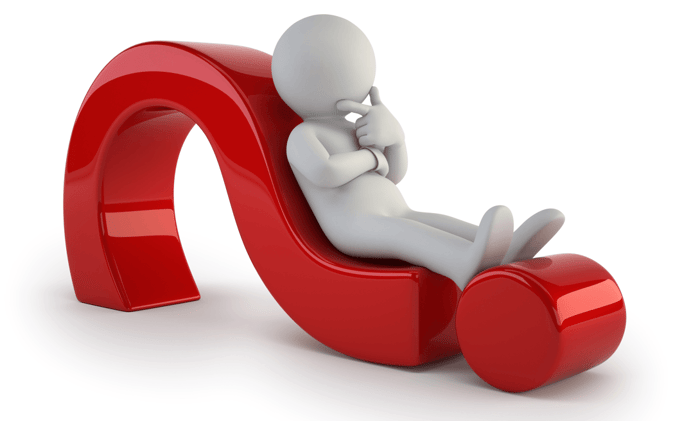 Where to Find Information?
Where to Find Information?
There are tons of great places you can look at to gather information and do research before you start creating these profiles. We mentioned analytics above, so let's start there!
Web Analytics
This is an amazing source to get info about to fill and round out your home buyer personas.
Page Traffic: Look at your higher-ranking pages to see which ones are getting the most traffic and then analyze the content on said pages. Now you have an idea of what kind of content your site visitors are interested, the information they're looking for.
Bounce Rate: Checking out your bounce rate will tell you if that content is something your visitors engage with or not.
Conversion rates: what content is doing well? Where are opt-ins coming from?
Backlinks: dig a little deeper and find out where your top-performing backlinks are coming from, and what's on THOSE pages to help boost your site.
Demographics and Interests: this is a report you can generate inside Google Analytics to learn more about the characteristics of your high-converting audiences - tip: filter the audience segment by people who have converted on your website.
To put this all together:
As a homebuilder, I notice a lot of pages on my site that talk about multi-family homes have high page traffic. I would then look to see what multi-family pages got a lot of conversions. Inside those converting pages I see a lot of women, aged 30-45. Then I would look to see what sites linked to those pages. Maybe it was a mom's blog that talked about modern duplex designs in a video and linked to my site as an example. This would tell me that one of my buyer personas are moms who enjoy videos and are interested in duplex homes with modern design elements.
Don't forget about social analytics here too - Facebook Audience Insights is an awesome tool that can tell you about the followers of your page.
Your Own Business Intelligence
Yep, you've been collecting this information and didn't even know it! Take a look at your CRM and all of the glorious data! Check your sales statistics and find out what models are the most popular (multi-family, laned homes, front attached garage, etc.) and what type of clients bought those models (couples, families, downsizers, etc.). Review notes from your sales team for common questions they get and from whom.
Simply Ask!
This is one that a lot of home builders don't generally utilize. You have no problem asking for a review after the sale, but you can tap into your existing database and conduct interviews! Create a focus group and ask them the details: why us? What helped make your decision? What were the key things you were looking for while shopping for your new home? And so on.
You can also send out surveys to your database. If you want to get a better return on these, incentivize the surveys so more people will take them.
 Creating a Profile
Creating a Profile
Now that you have piles of research information in front of you, it’s time to carve it into a complete buyer persona profile.
You can have as many personas as you need, but you should narrow it down to one or two primary personas that are your ideal prospects and will be your main target. Since you’ve done research and gained feedback from multiple prospects and customers, you’ll need to identify patterns and commonalities. Your main buyer persona(s) will actually be an amalgamation of information gathered from a pool of people, refined to be a prototypical representation of the majority.
What you're trying to do here is “tell their story”. You can again think of Facebook’s layout and imagine you’re creating a profile for your prospect. A basic outline might include things such as:
- Job and demographic information
- Their challenges and problems needing solutions
- Where they seek/gain information
- What a day in their life is like
- Common objections to product/service sales
Look back at the answers you received in your research. Who is this person, what are they like? Try to imagine everything from demographics to what they look like until it begins to resemble a real person – the more details, the better.
Here are two examples of what your buyer persona profiles might look like as a home builder:
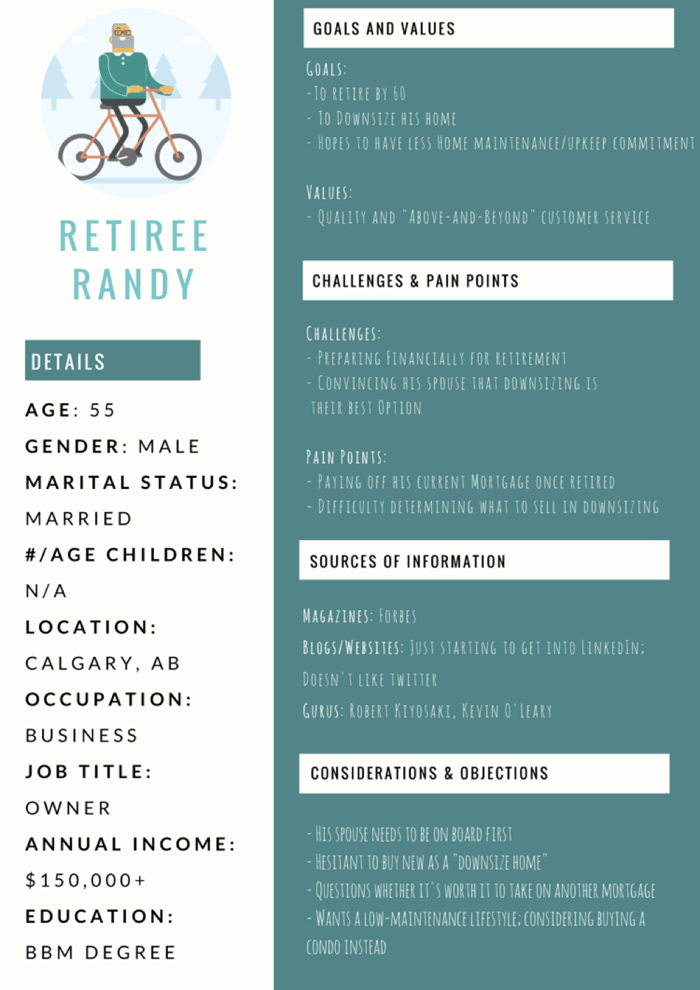
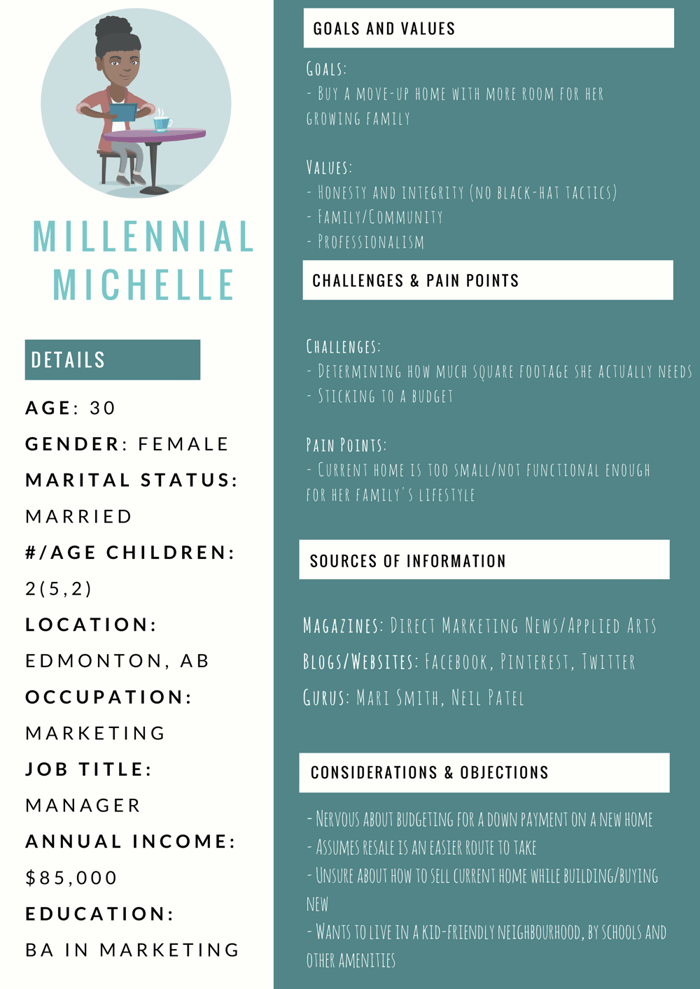 Keep in mind, while high-level information (such as age and job title) is useful, focusing on the why – the motives behind your personas behaviours – will improve the value of these profiles tenfold. Although developing quality buyer personas can be time-consuming, it is effective and will save you more time and effort in the long-run.
Keep in mind, while high-level information (such as age and job title) is useful, focusing on the why – the motives behind your personas behaviours – will improve the value of these profiles tenfold. Although developing quality buyer personas can be time-consuming, it is effective and will save you more time and effort in the long-run.
Applying Buyer Personas to The Content Process
So now you have your buyer personas – great!
…now what?
Your buyer personas will actually play a crucial role in every aspect of your content marketing process. To explain how, let’s break down the content process into four main parts: planning, creating, distributing, and analyzing.
1. Plan
Planning your content starts by coming up with both a topic and a format. For example, you may want to cover the topic of a typical home construction timeline and you may figure the best format for this is a blog post.
Not so fast, though!
Before any brainstorming can begin, you need to consult with your buyer personas – what topics would they be interested in? In what format do they prefer to consume content? Your data analytics should help you here, by showing you what types of existing content earned the most engagement.
2. Create
Once you’ve identified what your ideal buyers want to see (and consequently are more likely to click on) it’s time to create great content! To be truly great, your content should be mapped to your buyer personas. This means determining what it is they really want to know, and then presenting it to them in an educational way (rather than promotional).
Careful, though!
You have to keep in mind that different content needs to be created to match with buyer personas as well as where they are in their buyer's journey – review the importance of context to get a clear idea of how to do this.
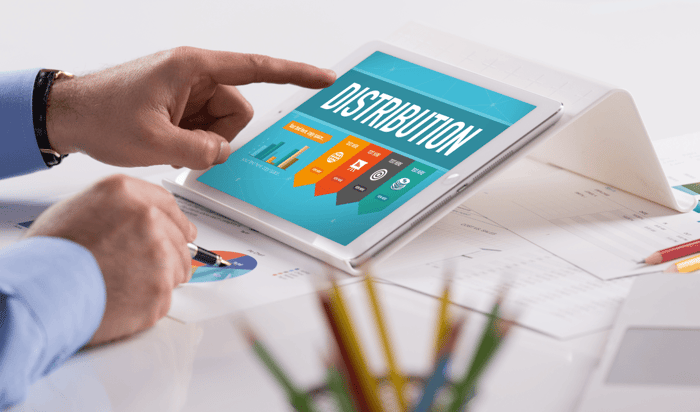 3. Distribute
3. Distribute
Creating fantastic content isn't enough to drive prospect engagement. Sure, you’ve hit the publish button; but is it reaching the eyes of your prospects? Can they even find it?
Distribution is a crucial step.
Think of it as a means to market your marketing. You have to spread your content throughout media channels to get noticed. Platforms like Facebook, Twitter, LinkedIn, Pinterest, and more, are places you can distribute your content with the goal of redirecting traffic to your own website.
So where do buyer personas come into play during this step?
Let us once again draw attention to the enormity of the web! Distributing your content “everywhere” is not only time-consuming, it can be time-wasting. There’s really no point to distributing your content on platforms your buyer personas don’t use. This is why it’s necessary to find out where your personas seek information and spend their time online – then, focus your energy on promoting your pieces there!
4. Analyze
Phew! You’ve planned your content, created it, and distributed it – time for a nap!
…but make it a quick one.
As I’m sure you guessed, your work isn’t done yet. Your content is out there in the vast virtual world, but don’t you want to know how it’s doing?
Analyzing your content’s performance is imperative for growth. Not only will your results tell you what is and isn’t working, they’ll help you learn even more about your buyer personas. By tracking views, shares, click-through rates, form submissions, leads captured, customers converted, and other revealing marketing metrics, you’ll be able to pick up on trends. This information will show you what your personas actually like, serving you the formula for great content on a silver platter.
Learn what works – then repeat it!
Having a strong, clear idea of who your buyer personas are will give direction to your inbound marketing strategy. They serve as compasses in the buyer’s journey, allowing you to map out your content accordingly. Instead of blindly throwing your content into the void hoping someone – anyone – will catch it, know whom you’re aiming for and hit that target audience!
When you have a strong, in-depth understanding of who your prospects are, you can tailor your content to their specific needs. This can be applied at every stage of the content process. With highly personalized content, you'll more often experience that smooth sale because you actually do know what they need, when they need it, and why they need it.
If your content isn't performing well, you should take it personally – do you really know your audience?
As promised, here is the handy infographic we mentioned! Thank you to MarketingProfs for this one:

Originally published April 6, 2018, updated Sept 24, 2019

![How to Create Home Buyer Personas [Updated]](https://blog.velocity23.com/hubfs/images/blog/Blog_Images/2018/2018-04/new-how-create-home-buyer-personas-template-friends-image.png)



